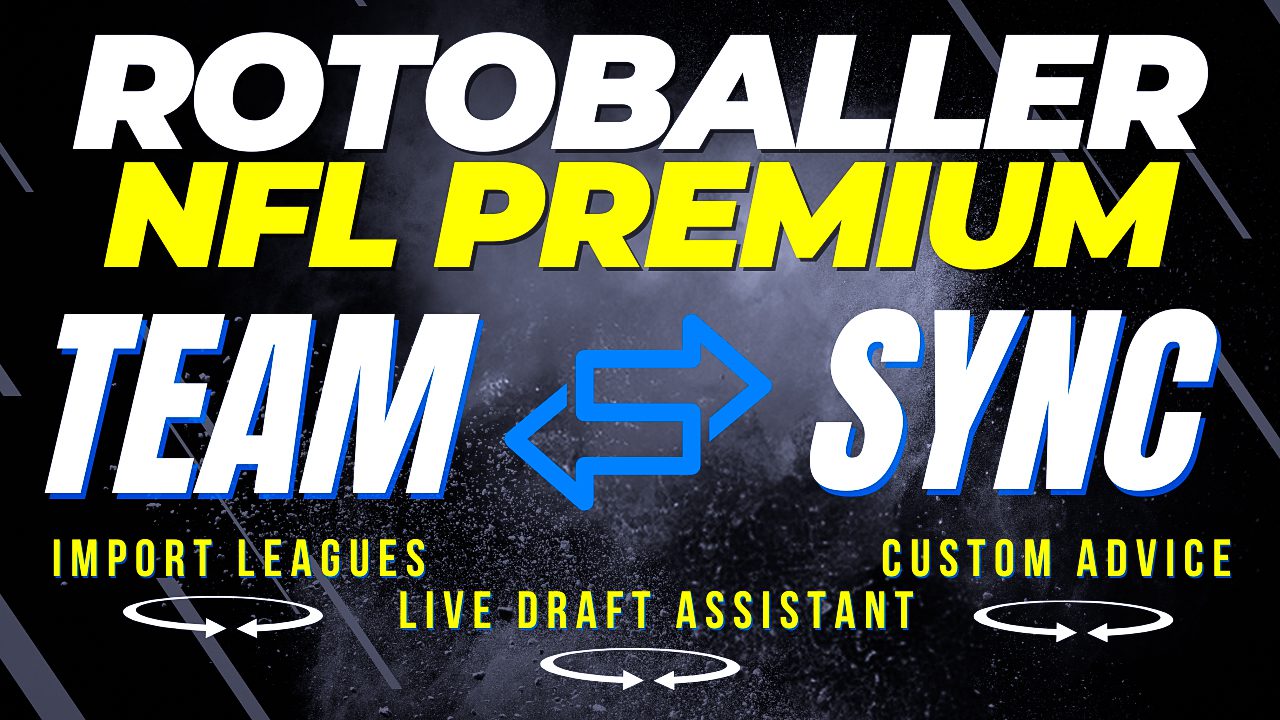Frank Dyevoich explains NFL free agency in comprehensive detail, from the franchise tag to the salary cap.
Super Bowl LVI is in the rearview, and the Los Angeles Rams are the world champions. After a thrilling season, marred by injuries and COVID-19, it is time to start looking ahead to 2022. The first major event of the NFL offseason is free agency. The concept of free agency is rather simple: unsigned players can sign with new teams for more money. Players get paid for their performance, and teams can improve by adding talent to the depleted positions on their roster. However, the process of free agency is actually intricate and quite complex, but fear not, I am here to break it all down for you.
Players become free agents for a variety of different reasons. Some players’ contracts are expiring, some players are cut from their team, and some players can only be signed to contracts with new teams under certain conditions. Further, there are two designations of free agents, restricted and unrestricted free agents.
Perhaps the most complex aspect of free agency is the variety of ways that teams can protect themselves from losing a valuable player. Teams can apply the franchise tag or transition tag, as well as a first, second, or original round tender. So let's dive in so you can follow along when free agency kicks off.
Be sure to check all of our fantasy football rankings for 2025:- 2025 fantasy football rankings (redraft)
- Dynasty fantasy football rankings
- 2025 NFL rookie fantasy football rankings
- Best ball fantasy football rankings
- Quarterback fantasy football rankings
- Running back fantasy football rankings
- Wide receiver fantasy football rankings
- Tight end fantasy football rankings
Important Dates of NFL Free Agency
All times indicated are Eastern Standard Time (EST)
February 22, 2022 - The first day NFL teams can apply the franchise or transition tag.
March 8, 2022 - 4:00 PM deadline for NFL teams to apply the franchise or transition tag.
March 14, 2022 - 4:00 PM start time of the legal tampering period (explained below).
March 16, 2020 - 4:00 PM official end of the legal tampering period and the start time of 2022 NFL free agency. Also by this time, NFL teams MUST:
- Exercise any 2022 options they have on player’s 2021 contracts;
- Assign a tender to restricted free agents in order to retain the Right of First Refusal;
- Be under the 2022 salary cap ($208.2 million).
April 22, 2022 - Deadline for restricted free agents to sign offer sheets (explained below).
April 27, 2022 - Deadline for NFL teams to match offer sheets to restricted free agents.
July 15, 2022 - 4:00 PM - Deadline for a franchise-tagged player to sign the tag or negotiate a long-term deal with their team.
Restricted v. Unrestricted Free Agents
When it comes to free agents, there are two classifications, restricted (RFA) and unrestricted free agents (UFA). An unrestricted free agent is as simple as it sounds, the player is not under contract and is free to sign with any team under any terms. A player becomes an unrestricted free agent by one of three ways. First, the player is released from his team and is not subject to waivers. A player is not subject to waivers if that player has four accrued seasons (on the active 53 man roster for at least six regular-season games) in the NFL. Second, the player was under contract and the contract has fully expired. Last, the player was not drafted in the NFL Draft.
Restricted free agents are much more complex. RFAs have restrictions on the terms under which they can sign with their original team or negotiate a contract with other teams. A player is classified as an RFA when he has three (3) accrued seasons in the NFL and his contract is about to expire. This becomes complicated when you have drafted rookies, normally signed to a four-year contract (fifth-year option on first-round rookies), who sit out the year on injured reserve, the non-football injury list, or due to suspension. These designations allow the teams to keep these players under contract while also removing them from the active 53 man roster. In other words, these players do not have an accrued season and are extremely likely to become restricted free agents or exclusive rights free agents down the road.
Restricted free agents can negotiate a long-term deal with their current team, play under a one-year contract with their current team for a salary that is pre-determined by the league (tenders), or negotiate with other teams for a long-term deal subject to certain protections held by the players' current team. In order to protect themselves from losing a valuable player with three accrued seasons, the current team must assign a “tender” to the restricted free agent of either a first-round, second-round, original round, or a Right of First Refusal tender. The tender allows the player to negotiate with other teams, but protects the original team by giving it what is called a Right of First Refusal. If another team reaches an agreement with the tendered player, they must sign that player to an offer sheet that lays out the full terms of the proposed contract.
The Right of First Refusal means that the original team has the right to match any offer made to the tendered player. If the team matches the offer, then it creates a contract with the tendered player. If the team does not match the offer, then the original team receives a draft pick from the new team which parallels the tender that was assigned to the player as compensation for losing the player.
For example, Player A is given a first-round tender, therefore a new team who wishes to sign Player A must give up its first-round pick in the upcoming NFL Draft to the original team in order to sign him. If Player A was given an original round tender and he was drafted in the fourth round of the NFL Draft, then the new team must give up a fourth-round pick in the upcoming NFL draft in order to sign Player A. The exception is the Right of First Refusal tender which is a tender without any compensation if the player signs with a new team. The team still gets the Right of First Refusal to match the offer sheet, but it receives zero compensation if they do not.
So why wouldn’t every team place a first-round tender on all of their restricted free agents? The answer is simple: money. The tender chosen also determines the salary for that player if a long-term agreement is not reached, and could be the difference between a team getting under the salary cap. A first-round tender is obviously the most costly to a team. Here are projections for restricted free agent salaries for 2022 according to spotrac.com:
- 1st Rounder: $5,432,000
- 2nd Rounder: $3,986,000
- Original Draft Round: $2,540,000
- Right of 1st Refusal: $2,433,000
NOTE: A player with less than three accrued seasons and an expiring contract is an Exclusive Rights Free Agent. These players must play under a one-year contract at the league minimum if their team makes them an offer.
Franchise Tag v. Transition Tag
When it comes to players with four or more accrued seasons, NFL Teams have two options to prevent their superstar players from becoming unrestricted free agents and signing with another team when their contracts are about to expire. The first option is the franchise tag, which can be exclusive or non-exclusive, and the second option is the transition tag.
Franchise Tag
The franchise tag is essentially a one-year contract. The NFL pre-determines the salary for players who play under the franchise tag based on position, and the player has to either sign the tag and play for that salary or negotiate a long-term deal with his team before July 15, 2022. The salary for a franchise-tagged player is set in one of two ways, either by averaging the top-five salaries by position for the previous league year, or if it’s higher, 120% of a player’s salary from the previous season. This means players like quarterbacks and defensive ends will have a much higher salary under the franchise tag than positions like a tight end or a kicker.
Teams can franchise tag a player up to three times if a long-term deal cannot be reached, however, subsequent franchise tags result in a significant increase in salary for the player. The second franchise tag on a player requires a 120% increase from the players' salary under the initial franchise tag. However, if a team wants to franchise tag a player three years in a row, the player’s salary is either an increase of 144% from the second franchise tag salary or an average of the top-five salaries at the highest‑paid position, whichever is higher.
Take a second and read that again. The average of the top-five salaries at the highest‑paid position, not the same position. This means that if a team wanted to franchise tag a tight end for three years straight, his third year under the tag would pay him the one-year salary of a franchise-tagged quarterback. That is why you never see a player tagged three years in a row.
The franchise tag can be either exclusive or non-exclusive. An exclusive franchise tag is the equivalent of putting the player in jail. He is not allowed to negotiate with any other teams and must either sign a long-term deal by July 5, 2022, or play under the franchise tag for one year and accept the pre-determined salary. A non-exclusive franchise tag allows the player to negotiate with other teams, but protects the original team by giving it a Right of First Refusal, similar to restricted free agents, but with much more significant compensation if they lose the player. If another team reaches an agreement with the franchise-tagged player, they must sign that player to an offer sheet that lays out the full terms of the proposed contract.
The Right of First Refusal gives the original team the right to match any offer made to the franchise-tagged player. If the team matches the offer, then it creates a contract with a franchise-tagged player. If the team does not match the offer, then the original team receives two (2) first-round picks as compensation from the new signing team. You will rarely see an offer sheet signed for a player with the non-exclusive franchise tag because teams are very reluctant to give up two (2) first-round picks for any player.
Transition Tag
The second option an NFL team has to protect their superstar player from leaving is the transition tag. The transition tag is essentially a poor man’s non-exclusive franchise tag. The transition-tagged player has the right to negotiate with other teams, and if another team signs the player to an offer sheet, the original team has a Right of First Refusal to match the offer. The difference is that if the original team does not match the offer, the player signs with the new team, and the original team receives zero compensation. So why would a team use the transition tag instead of the non-exclusive franchise tag?
First, the pre-determined salary for a transition-tagged player is significantly less than a franchise-tagged player. Second, the transition tag allows teams to test the market for a given player because prospective teams usually will not sign a non-exclusive franchise-tagged player to an offer sheet given the two (2) first-round picks they will have to give up if they sign him. If another team knows they don’t have to give up anything in order to sign the transition tagged player, they are much more likely to make an offer, which gives the original team a very good idea on the player’s market without making him available or negotiating trades. However, there was a drastic decrease in the use of transition tags until 2011 because prior to that, prospective NFL teams started adding language to their offer sheets that basically made it a guarantee that the original team would not match the offer.
For example, in 2005 the Seattle Seahawks placed the transition tag on offensive guard Steve Hutchinson. The Minnesota Vikings signed Hutchinson to an offer sheet for $49 million with $16 million guaranteed, but they included language that said the entire $49 million contract was fully guaranteed if Hutchinson were not the highest-paid offensive linemen on the team he signed with. He would have been the highest-paid offensive lineman on the Vikings, but he would have been the second highest-paid offensive lineman on the Seahawks. This offer sheet basically meant if the Seahawks wanted to match the offer, Hutchinson’s $49 million was fully guaranteed. The Seahawks challenged the language in binding arbitration pursuant to the collective bargaining agreement (CBA) and lost. As a result, they did not match the offer sheet and the Vikings signed Hutchinson without having to give anything up in compensation to the Seahawks. This kind of language was known as a “poison pill” in an offer sheet and was thankfully banned in the 2011 CBA.
The last thing to note about the franchise tag and transition tag is that a team can only use one each season, not both. If an NFL team franchise tags their quarterback, they can not use the transition tag on another player and vice versa.
2020 Projected Franchise and Transition Tag salaries according to overthecap.com:
| Position | Franchise Tag | Transition Tag |
|---|---|---|
| QB | $28,598,000 | $25,651,000 |
| DE | $20,186,000 | $16,623,000 |
| WR | $19,127,000 | $16,740,000 |
| LB | $17,417,000 | $14,882,000 |
| CB | $17,295,000 | $14,904,000 |
| DT | $16,888,000 | $13,596,000 |
| OL | $16,698,000 | $14,997,000 |
| S | $13,544,000 | $11,265,000 |
| RB | $12,536,000 | $10,148,000 |
| TE | $10,834,000 | $9,332,000 |
| ST | $5,469,000 | $4,980,000 |
Legal Tampering
Officially, free agents can’t sign a contract with a new team until 4:00 PM on March 16, 2022. It is against league rules for players to talk to other teams about a contract while they are still under contract with their current team. However, the NFL allows impending UFAs to begin negotiating with other teams two days prior to the official start of free agency. This process is known as the legal tampering period. The NFL does not like that term, however, so they refer to it as “the negotiating period for prospective unrestricted free agents.” You will also hear it referred to as the negotiating window or the negotiation period.
At 4:00 PM on March 14, 2022, impending UFAs are allowed to negotiate and agree to terms with a new team. The specific terms of the legal tampering period are that all teams have the right to negotiate all aspects of an NFL player's contract with the certified agent of an impending UFA. Essentially, player contracts are negotiated in full and verbally accepted during the legal tampering period, but the players can’t sign the contract and make their addition to the new team official until the official start of free agency on March 16th.
Although players are allowed to negotiate new contracts with prospective teams, there are a few restrictions to the legal tampering period. First, The legal tampering period is only for unrestricted free agents. Restricted free agents must wait until the official start of free agency to begin negotiating potential offer sheets with other teams. Second, teams are not allowed to visit or speak with the players directly, they must negotiate with the players’ certified agents only. This means that players who choose to represent themselves are not allowed to negotiate during the legal tampering period.
Lastly, players, agents, and teams are not allowed to make travel arrangements for visits on March 18th. Technically they must wait until free agency begins before making travel plans. Any violation of these rules can result in a penalty for conduct detrimental to the league as well as a violation of the NFL’s anti-tampering policy. This can result in substantial fines and even the loss of future draft picks if the offenses are egregious.
Download Our Free News & Alerts Mobile App
Like what you see? Download our updated fantasy football app for iPhone and Android with 24x7 player news, injury alerts, rankings, starts/sits & more. All free!

More Fantasy Football Analysis





 RADIO
RADIO
























